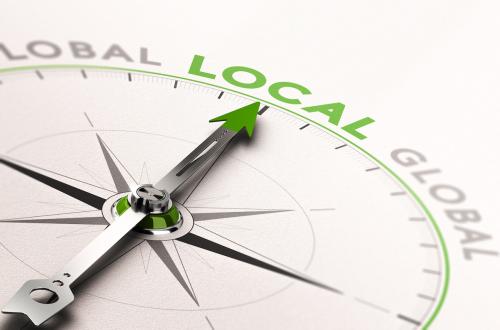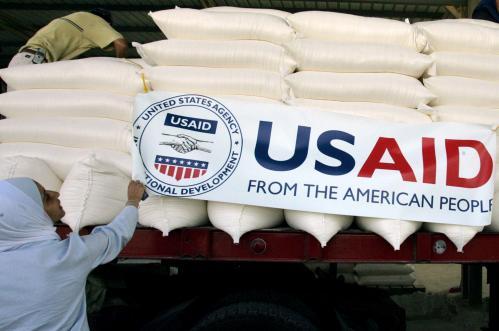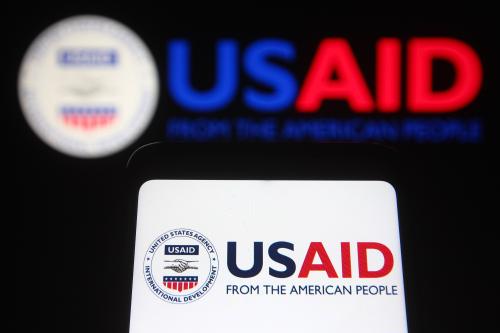On November 7, Typhoon Yolanda/Haiyan hit the Philippines, affecting 9.7 million people, displacing 3 million, killing 3,637, and destroying 384,000 acres of rice, corn and other crops worth $105 million.
Congress, through the House/Senate farm bill conference, once again has the opportunity to provide the U.S. international food aid program the flexibility that is essential for our help to be effective in responding to life-threatening disasters.
Look at how the U.S. has responded in the days following the devastation by Yolanda/Haiyan. USAID’s Office of Food for Peace committed $7.75 million from the International Disaster Assistance account to the World Food Program to purchase food in the Philippines and neighboring countries. Fifty-five tons of nutritious emergency food products were airlifted from the U.S. One thousand one hundred tons of rice, prepositioned in Sri Lanka for just such an emergency, is en route and should arrive around December 2nd. These limited actions ensure that the U.S. is able to provide immediate relief to those in dire need.
U.S. food assistance resources are restricted to the purchase of U.S. grown commodities that then have to be shipped across the ocean. An expedited procurement of U.S. rice would arrive in the Philippines in late January or early February at the earliest. That is 10-12 weeks after the typhoon hit, which can help relieve medium-term food needs, but does nothing to address the hunger and starvation in the days and weeks immediately following the destruction and devastation.
And one might say the Philippines is lucky as the typhoon struck at the beginning of the U.S. fiscal year so resources are available; if such a disaster strikes in July or August, the limited cash is likely to have already been spent responding to earlier crises.
The United States is the number one responder to humanitarian crises around the world, and the 60-year old food assistance program is at the center of that capability. Food aid is an important tool of U.S. smart power. It reflects the humanitarian streak that runs through the American people and at the same time enhances our image and influence in the world, such as the overwhelming appreciation by the people of Indonesia for our helping in the recovery from the 2010 tsunami.
In certain circumstances, and for the medium term to relieve food shortages, shipping commodities from the U.S. makes sense. But not allowing the resources to be used to procure food in the nearest and most efficient market constrains U.S. responsiveness and does not reflect well on the generosity of the American people.
This crisis should not be wasted by allowing the United States food aid program to continue along lines that were relevant in the 1950s and 1960s but not in the 21st century. The U.S. government needs the flexibility to purchase food commodities in the most efficient market, which sometimes will be the U.S., sometimes the country affected, and sometimes neighboring countries. This flexibility will allow more efficient use of U.S. taxpayer resources and better reflect American values. The reform of the program proposed by the Obama administration earlier this year would allow the same dollar value to reach 4 million additional people. That proposal lost on the House floor by only 17 votes. My guess is, if it were put to the House now, in light of Yolanda/Haiyan and the recent evidence that purchasing food locally is the only way to get food to those in need in Syria, the reform would pass.
The House/Senate conference on the farm bill should adopt not just the modest change of 20 percent flexibility found in the Senate bill, but allow up to 30-40 percent, or, even better, 50 percent of our food assistance to be used for local and regional purchase if that is the most efficient and readily available source.
Last week I was in North Carolina meeting with a farm organization representative and asked what the position of the organization and its members on the administration’s food aid reform proposal was. His response was that the issue was not high on their agenda but that farmers object to the notion of giving cash to corrupt governments. Not an unreasonable attitude. So I then asked what the response might be if they were told the cash did not go to governments (as it does not), but instead to the World Food Program and U.S. non-profit organizations (Mercy Corps and Catholic Relief Service) that have a long track record of effectively purchasing commodities on local and regional markets. He said, in that case, their response probably would be different.
Why has every other country moved to providing cash rather than home-grown commodities? For the simple reason of efficiency and responsiveness. One would think that the United States, seen around the world as the champion of free enterprise and market-based solutions, would see the logic in purchasing emergency commodities in the most efficient market available!



Commentary
Typhoon Yolanda/Haiyan Makes the Case for More Flexible Food Aid
November 18, 2013